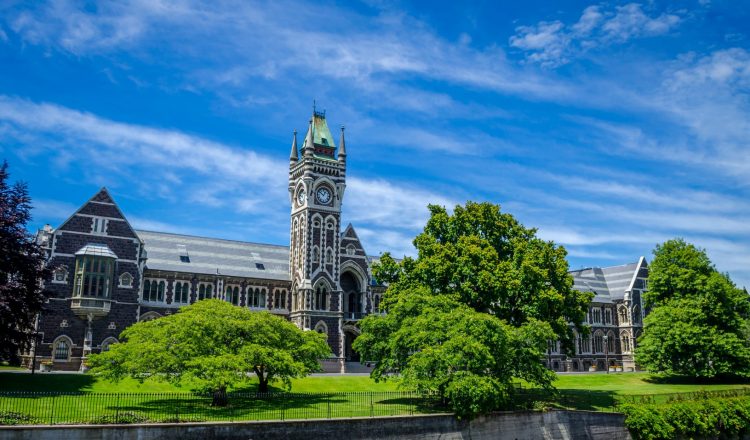ニュージーランドの資格(NZQF)について
中等教育でも高等教育でも、自分のプログラムがニュージーランド資格枠組(NZQF)の資格取得につながるかどうかを確認するのは良いことです、なぜなら品質が保証されているからです。
NZQFに掲載されている資格は、卒業時に得られる知識やスキルのレベル、さらにはその資格がもたらす進学や就職の可能性について、明確な道筋を示しています。
NZQFのレベル
NZQFは10段階のレベルに分かれており、サーティフィケートから博士号までの幅広い資格をカバーしています。レベルは、学習内容の複雑さに基づいており、レベル1のサーティフィケートが最も複雑ではありません。
セカンダリースクールでは、NZQFのレベル1から3までをカバーするNCEA(National Certificate of Educational Achievement)を目指します。
セカンダリースクール終了後、高等教育機関への進学を希望する生徒は、大学、ポリテクニック、私立高等教育機関、業界のトレーニング機関など、さまざまな教育機関の中から選択することができます。このレベルで学ぶためには、セカンダリースクールを修了している必要があるかもしれません。
1.基本的な一般知識および基礎知識
スキル
- 簡単な問題に基本的な解決策を適用できる
- 簡単なタスクを実行するための基本的なスキルを適用できる
アプリケーション
- 高度に構造化された環境
- 自分の学習にある程度の責任を持つこと
- 他者との相互作用
2.仕事や研究の分野に関する基本的な事実上および/または実務上の知識
スキル
- 身近な問題に既知の解決策を適用できる
- 仕事や研究の分野に関連する標準的なプロセスを適用できる
アプリケーション
- 総監督
- 自分の学習とパフォーマンスにある程度の責任を持つこと、他者と協力すること
3.仕事や研究の分野において、ある程度の業務上および理論上の知識があること
スキル
- 身近な問題に対して、既知の解決策の中から選択して適用することができる
- 仕事や学習の分野に関連するさまざまな標準プロセスを適用することができる
アプリケーション
- 限定的な監督
- 自分自身の学習とパフォーマンスに大きな責任を持つこと
- 他者との関わりの中で自分の行動を調整できる
- グループのパフォーマンスに貢献する
4.仕事や研究の分野における幅広い業務知識と理論的知識
スキル
- 身近な問題や時には馴染みのない問題に対して、解決策を選択し適用することができる
- 仕事や学習の分野に関連する標準的および非標準的な一連のプロセスを選択し、適用することができる
アプリケーション
- 広範な指導のもと、学習とパフォーマンスを自己管理できる
- 他者のパフォーマンスに責任を持つことができる
5.特定の業務や研究分野における幅広い業務知識または技術的・理論的知識
スキル
- 身近な問題や時には馴染みのない問題に対して、さまざまな解決策を選択して適用することができる
- 仕事や学習の分野に関連する標準的および非標準的な一連のプロセスを選択し、適用することができる
アプリケーション
- 明確な状況の中で、学習とパフォーマンスを完全に自己管理できる
- 他者の学習とパフォーマンスの管理にある程度責任を持つことができる
6.仕事や研究の分野において、専門的な技術的または理論的な知識を有していること
スキル
- 慣れ親しんだ、あるいは馴染みのない問題を分析し、解決策を生み出すことができる
- 仕事や学習の分野に関連する標準的および非標準的な一連のプロセスを選択し、適用することができる
アプリケーション
- ダイナミックな状況の中で、学習とパフォーマンスの完全な自己管理ができる
- ダイナミックな状況でリーダーシップを発揮できる
7.1つ以上の仕事や研究の分野において、専門的な技術的または理論的知識を深く理解していること
スキル
- 馴染みのない、時には複雑な問題を分析し、解決策を導き出すことができる
- 仕事や研究の分野に関連する様々なプロセスを選択し、適応させ、適用することができる
アプリケーション
- 高度なジェネリックスキルおよび/または専門的な知識とスキルを、専門的な状況または研究分野において発揮できる
8.専門分野における高度な技術的・理論的知識を持ち、その基礎となる重要な原則を批判的に理解していること
スキル
- 複雑で時には予測できない問題を分析し、解決策を生み出すことができる
- 仕事や研究の分野に関連する様々なプロセスを評価し、適用することができる
アプリケーション
- 高度なジェネリックスキルおよび/または専門的な知識とスキルの適用を通じて、専門職および/または学問分野の識別を深めることができる
- 専門職や専門分野の整合性に責任を持つことができる
9.高度な専門的な知識(そのうちのいくつかは最先端の知識)と、研究または実践の分野における問題に対する批判的な認識を有していること
スキル
- 新しいスキルやテクニックを開発し、既存または新たな問題に適用できる
- 研究分野または実践分野における最新レベルのアプリケーションを完全に理解していること
アプリケーション
- 高度に専門的な知識とスキルを、ある分野や専門的な業務の中で独立して適用できる
- 専門職や分野において、リーダーシップを担う責任があること
資格を取得すると得られるもの
NZQFの資格を取得すると、以下のようなコンポーネントが得られます。
- 達成したことを示す証明書教育機関から提供されるもので、資格の成果報告に記載されている学習と理解のレベルを達成したことを示します。
- 達成記録に資格が追加されます。資格がNZQFに記載されている場合、その資格はあなたの達成記録に追加されます。達成記録には、あなたが修了した品質保証付き(NZQFに掲載された)の学習内容がすべて記載されており、新しい資格を取得するたびに更新されます。

















































